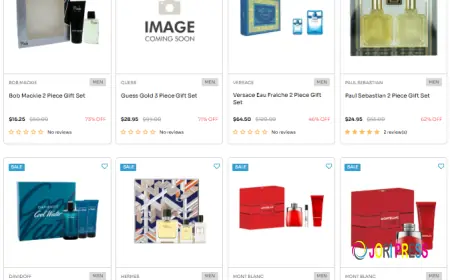How Mineral Wool Insulation Holds Up in Moisture-Prone Areas

Mineral wool insulation is often chosen for its fire resistance, sound absorption, and thermal performance—but in buildings where moisture is a concern, how does it really perform? This is a common question for property owners evaluating insulation options for basements, crawlspaces, exterior walls, and buildings in flood-prone zones. This article explains how mineral wool insulation behaves in damp or wet conditions, where it performs well, and what risks or limitations may still apply when used in moisture-heavy environments.
Mineral Wool’s Core Resistance to Moisture
Mineral wool insulation is hydrophobic, meaning it repels water rather than absorbing it. This property gives it a performance advantage in environments where moisture intrusion is likely.
How Mineral Wool Is Manufactured to Resist Water
Mineral wool is made by spinning molten stone or slag into fibers. During manufacturing, oil-based binders and water-repellent additives are applied, which cause water to bead on the surface rather than soak into the fibers. This makes the insulation resistant to short-term moisture contact.
Behavior in High-Humidity and Intermittently Wet Areas
Mineral wool performs well in humid environments like basements and crawl spaces because it doesn’t wick water. In areas with occasional leaks or condensation, it retains its shape and insulating value. However, standing water can eventually reduce its performance if prolonged saturation occurs.
Where Mineral Wool Performs Best in Moisture-Prone Applications
Mineral wool works reliably in areas where moisture is common but not persistent. Its dimensional stability, fire resistance, and drainage capacity make it a strong candidate in specific building zones.

Foundation and Basement Walls
Mineral wool boards are often used on foundation walls—both interior and exterior—because they don't compress under moisture and allow the wall to dry outward. These applications help maintain thermal performance while minimizing mold risk.
Roof Assemblies and Exterior Cavity Walls
In ventilated assemblies or rain screen systems, mineral wool allows drainage and airflow behind cladding. The insulation doesn’t block moisture movement but resists internal water absorption, making it suitable for use behind siding or in flat roofs.
Crawlspaces and Mechanical Rooms
In semi-conditioned crawlspaces or utility areas with pipe condensation or soil moisture, mineral wool resists mold formation. Its ability to retain R-value despite humid conditions helps maintain energy efficiency in marginal zones.
Comparing Mineral Wool with Other Moisture-Tolerant Insulations
In moisture-exposed areas, not all insulation types perform equally. The comparison below outlines where mineral wool stands among the most common alternatives:
|
Insulation Type |
Water Resistance |
Mold Growth Potential |
Ideal Moisture-Prone Applications |
|---|---|---|---|
|
Mineral wool |
Repels bulk water, breathable |
Low |
Basements, crawlspaces, exterior walls |
|
Closed-cell spray foam |
Impermeable, acts as barrier |
Very low |
Flood zones, subfloors, rim joists |
|
Fiberglass batts |
Absorbs water, dries slowly |
Moderate to high |
Not recommended for high-moisture areas |
|
Rigid foam board (XPS) |
Moderate resistance |
Low to moderate |
Below-grade, behind drywall (with sealant) |
|
Cellulose (dense-pack) |
Absorbs and holds water |
High unless treated |
Best used in dry, enclosed wall cavities |
Risks and Limitations of Using Mineral Wool in Wet Areas
While mineral wool offers strong resistance to moisture, it’s not a catch-all solution in environments with high water exposure or vapor drive. Misuse or misplacement can still lead to performance issues.

Prolonged Saturation Reduces Insulating Performance
If mineral wool remains submerged or saturated over time, its thermal resistance drops. Though it will eventually dry out, saturated conditions can lead to temporary energy loss or even degradation in some formulations.
Not a Vapor Barrier or Air Seal
Mineral wool is vapor-open. This allows drying but doesn’t block vapor movement. It must be paired with separate air sealing or vapor control layers when needed, especially in walls where moisture migration from indoor air is an issue.
Needs Proper Drainage and Drying Conditions
In assemblies without adequate drainage or drying potential, trapped moisture around mineral wool can encourage surrounding materials (like wood or drywall) to develop mold or decay—even if the insulation itself remains unaffected.
Best Practices for Installing Mineral Wool in Moisture-Prone Buildings
To ensure mineral wool performs properly in wet environments, installation and system design must support moisture management.
Use With Capillary Breaks and Rigid Drainage Planes
Mineral wool should be installed over masonry or framing that includes drainage mats, capillary breaks, or vapor diffusion ports. This helps moisture escape rather than accumulate at the insulation surface.
Combine With Air Barriers and Vapor Retarders Strategically
While mineral wool breathes, buildings still require air sealing to prevent condensation and infiltration. Use compatible vapor retarders on the warm side of the wall and continuous air barriers at critical transitions.
Keep Insulation Above Water Exposure Zones
Avoid placing mineral wool in direct contact with standing water or wet ground. Elevate batts or boards off subfloors and slabs, especially in crawlspaces or unfinished basements.
Conclusion
Mineral wool insulation is well suited for areas where moisture is a concern—but not where water sits for long periods. Its hydrophobic properties, dimensional stability, and resistance to mold make it an ideal choice for basements, exterior wall cavities, and humid zones when installed with proper drainage and ventilation design. It doesn’t absorb moisture like fiberglass and retains much of its R-value even in high-humidity environments. However, mineral wool is not a waterproofing material and should not be treated as a vapor barrier or primary moisture solution. In buildings with persistent leaks or high groundwater, other materials like closed-cell spray foam may be more appropriate. Choosing the right insulation involves balancing moisture exposure, thermal goals, and air sealing needs. Mineral wool fits well into systems that manage moisture through proper detailing, layering, and ventilation.
Learn more: https://armored-insulation.com/?utm_source=backlink
FAQs
Can mineral wool insulation get wet without losing performance?
Mineral wool can repel short-term water contact and won’t collapse when damp. If it becomes saturated, it will temporarily lose R-value but usually regains performance after drying.
Does mineral wool grow mold in humid conditions?
No. Mineral wool doesn’t support mold growth because it lacks organic content. It remains stable in humid conditions and won't degrade biologically.
Is mineral wool suitable for crawlspaces?
Yes, if the crawlspace is semi-conditioned or properly vented and mineral wool is elevated off direct ground contact. It should be paired with vapor barriers or capillary breaks.
How does mineral wool compare to spray foam for wet basements?
Spray foam creates a moisture barrier and air seal, while mineral wool allows drying. Spray foam is better in flood-prone zones. Mineral wool works well in systems designed to breathe.
Can mineral wool be used outside behind siding?
Yes. Mineral wool boards are often used behind rain screen cladding systems because they allow moisture drainage while resisting water absorption and compression.
Author: Jared Baker, Owner and Director of Business, brings deep local insight and strong business expertise to Armored Insulation as a native of Mayfield. While continuing a full-time role as a Staff Officer with a federal natural resources agency, has successfully built multiple ventures, including Bluegrass Commercial Cleaning, Animal Tales, and Undercover Properties. As Armored’s Business and Marketing Manager, plays a key role in upholding the company’s focus on delivering top-tier service.
Reviewer: Mia Clark used her 9 years of experience in spray foam to review this article and offered input focused on helping companies make their services easier to understand and market effectively.
What's Your Reaction?
 Like
0
Like
0
 Dislike
0
Dislike
0
 Love
0
Love
0
 Funny
0
Funny
0
 Angry
0
Angry
0
 Sad
0
Sad
0
 Wow
0
Wow
0


















































